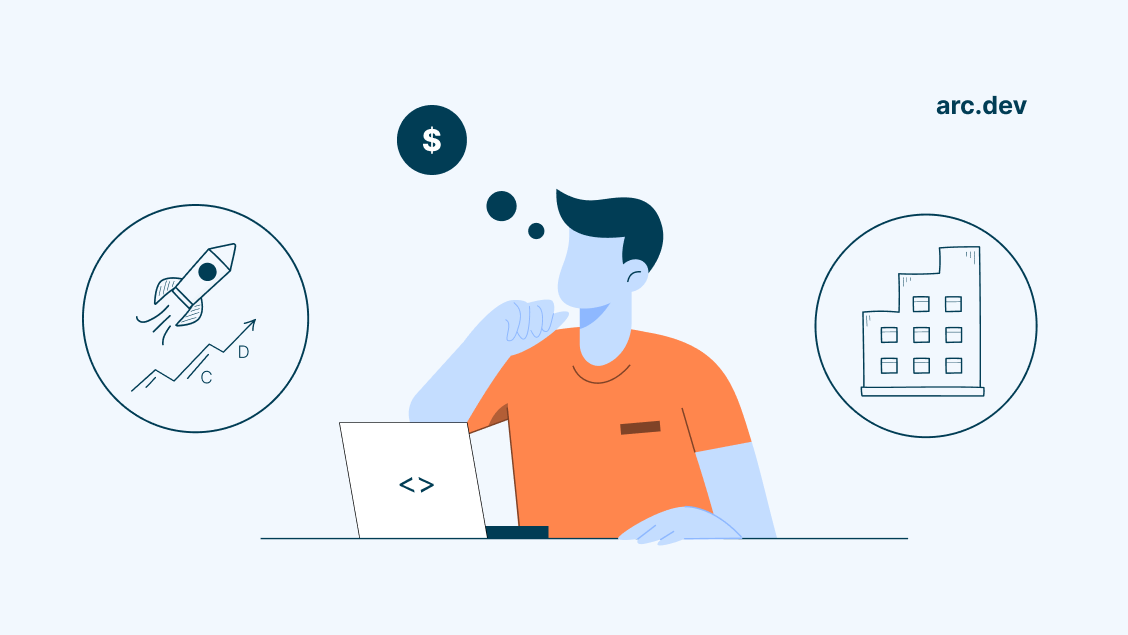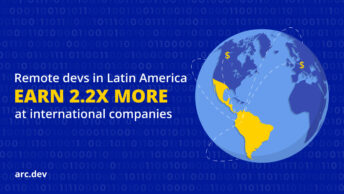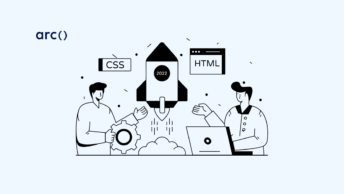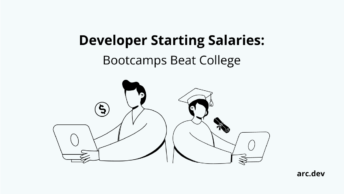According to an Arc salary survey with 2,839 respondents, remote developers in the US earn an 11.5% higher median salary ($145,000 vs $130,000) at late-stage startups (series C and D) than at public companies. Globally, the difference is 9%. For those with less than 5 years of experience, the gap is more obvious, as remote developers earn 17.4% more at late-stage startups vs post-IPO companies.
The largest portion of survey respondents (45%) work in the software and IT services industry. The data is global, with respondents based in the US, Canada, Europe, Asia, Africa, Latin America, and Australia. The trend of late-stage startups paying higher developer salaries than public companies is observed nationally in the US, Spain, and Mexico.
Looking to hire the best remote developers? Arc can help you:
⚡️ Get instant candidate matches without searching
⚡️ Identify top applicants from our network of 350,000+
⚡️ Hire 4x faster with vetted candidates (qualified and interview-ready)
Try Arc to hire top developers now →
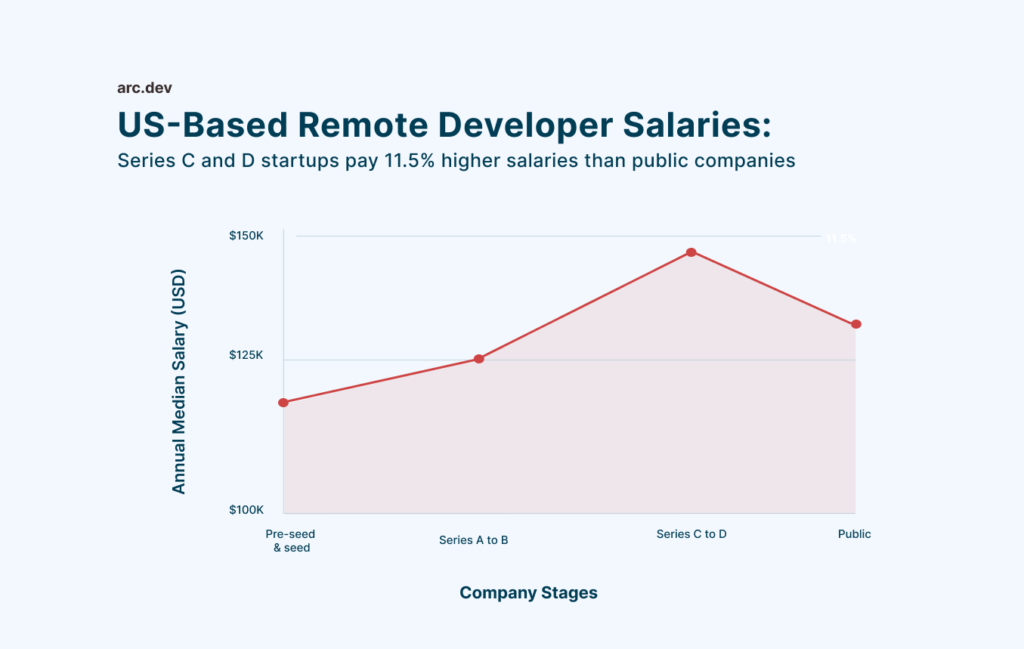
Developer salaries differ by business stage — and the salaries offered can sometimes differ by up to 51.3% if you are a junior developer.
“It’s no secret that salary is a major factor in choosing a job. Our report will help developers be more strategic about salary when job hunting. Startups flushed with funds are snatching up the best and brightest from secure and more established public companies. Well-funded late-stage startups with a proven business model can sustain high salaries,” says Arc’s Head of Marketing Christine Orchard.
Series C and D companies can include popular communication tools like Notion and Loom; HR tech like Remote, Deel, Oyster, and MoveWorks; popular developer tools like Algolia; and crypto companies such as FireBlocks.
Public companies may include popular tech like Apple, Microsoft, Alphabet, and Amazon; food and beverage like Coca-Cola; companies in the entertainment industry like Disney; and retail companies like Walmart.
Salary at Late-Stage Startups vs Public Companies
Late-stage startups pay software developers the highest incomes. (Note that developers may also receive other compensation as part of their overall package.)
Series C and D startups pay 9.1% higher annual global median salaries than public companies.
However, this does not imply series C and D startups will decrease their salaries on IPO. Instead, it shows the state of the market in 2022.
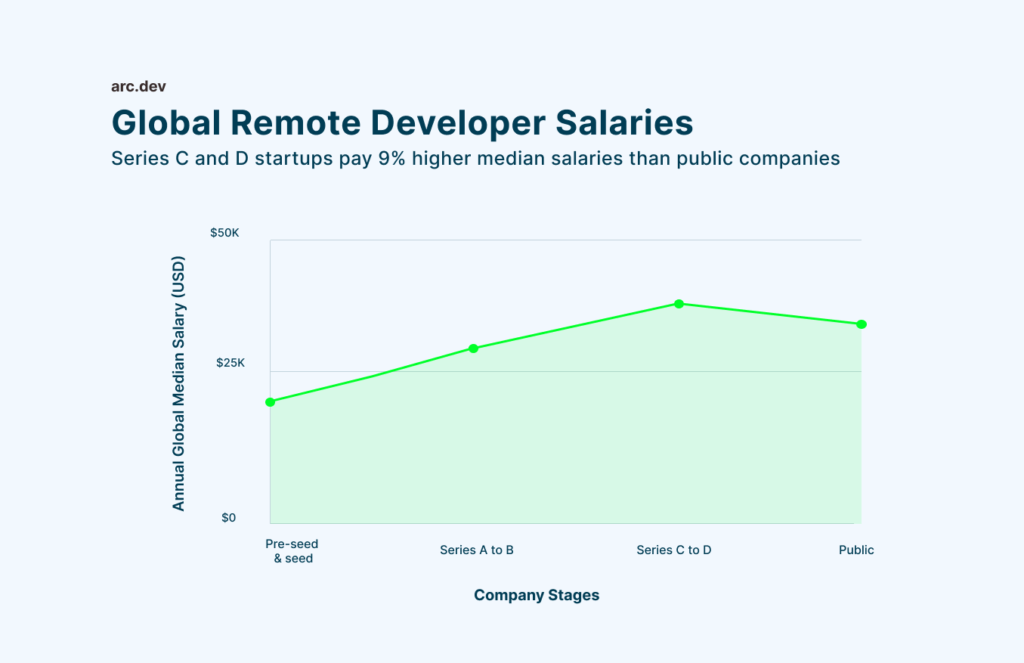
The data differs from region to region. We did a deep dive into six countries; we found that the trend of late-stage startups’ high salaries is observed in:
- US: Developers in the US earn 11.5% more — $145,000 at late-stage and $130,000 at public companies.
- Spain: Developers in Spain earn 14.3% more — $40,000 at late-stage and $34,990 at public companies.
- Mexico: Series C-D pays an annual median salary of $37,350, a massive 81.9% more than public companies ($20,529).
However, public companies in Colombia, Argentina, and India pay more than late-stage startups.
Globally, the difference between the salary of late-stage startups and public companies by seniority is as follows:
- Junior and mid-level devs with 0-5 years of experience earn 17.4% higher globally at late-stage than at public companies. Companies are willing to pay top wages to young, agile developers with new tech skills.
- Senior developers with 6 and more years of experience earn 4.2% higher at late-stage vs public companies.
Asked to choose between a late-stage startup and a public company, JavaScript developer Carlos Azaustre says, “If both companies offer a similar position with similar responsibilities, I’d choose the startup. Not because of the salary but because of the growth opportunities.”
Salary at Growth-Stage vs Early-Stage Startups
Developers earn a whopping 30.5% higher median salary at Series A and B startups than at pre-seed or seed-funded startups.
- US: the difference is 8.7% — $125,000 at Series A and B vs $115,000 at early-stage.
- Spain: the difference is 7.3% — $34,000 at Series A and B vs $31,680 at early-stage.
- Mexico: the difference is 18.8% — $19,000 at Series A and B vs $16,000 at early-stage startups.
- Colombia: the difference is 66.7% — $15,000 at Series A and B vs $9,000 at early-stage startups.
- India: the difference is 8.8% — $40,000 at Series A and B vs $36,750 at early-stage startups.
However, in Argentina, growth-stage and early-stage startups pay the same annual median salary of $12,000.
Globally, the salary difference is more for junior developers than for senior developers:
- Junior developers earn 51.3% more at Series A and B vs pre-seed and seed.
- Senior developers get paid 6.7% higher at Series A and B vs pre-seed and seed.
Stock Options
Late-stage startups are most likely to offer stock options, with 14.7% of remote developers reporting receiving them. Public companies, on the other hand, provide stock options to 12.4% of their employees.
Regardless, the low percentages across the board show that companies offer stock options to only a select few remote developers — most likely the C-suite and those in senior positions.
Similarly, series A and B companies offer stock options to 12.4% of their remote developers while early-stage startups offer them to 9.1%.
Conclusion
Globally, remote developers working in late-stage startups earn higher annual median salaries than developers working in public companies.
If you want the highest salary, work with late-stage startups. However, other things such as job security, brand name, stock options, workload, and career progression, may differ.
What you choose will depend on your priorities. “I’d love to work for a startup between the seed stage and intermediate. You can learn more in a startup and there are higher chances to contribute. Public companies are more stable but ultimately it depends on your priorities. If I had to choose between instability and growth, or stability but little to no growth opportunities then I’d pick the first choice,” says Azaustre.
You can also explore HireAI to skip the line and:
⚡️ Get instant candidate matches without searching
⚡️ Identify top applicants from our network of 350,000+ with no manual screening
⚡️ Hire 4x faster with vetted candidates (qualified and interview-ready)
Try HireAI and hire top developers now →
Data Source
2,839 global remote software developers were surveyed from December 31, 2021, to April 24, 2022. Check the results here (updated in real-time).
We prorated part-time salaries to full-time.
Percentage of total entries by business stage:
- Pre-seed funding & seed-funding (Early-stage startups): 25.6%
- Series A to series B funding (Growth-stage startups): 26.6%
- Series C to series D funding (Late-stage startups): 15.6%
- Public company: 32.2%
Percentage of entries by seniority:
- Junior or mid-level developers with 0-5 years of experience: 62.2%
- Senior developers with 6 or more years of experience: 37.8%
What is Arc?
Arc is a radically different remote job search platform for developers. We connect developers worldwide with tech companies hiring remotely.
Developers get featured to companies and land a remote job in 14 days. Sign up here.
Employers can get access to view profiles of pre-vetted remote developers for both permanent and contract roles. Sign up here.


